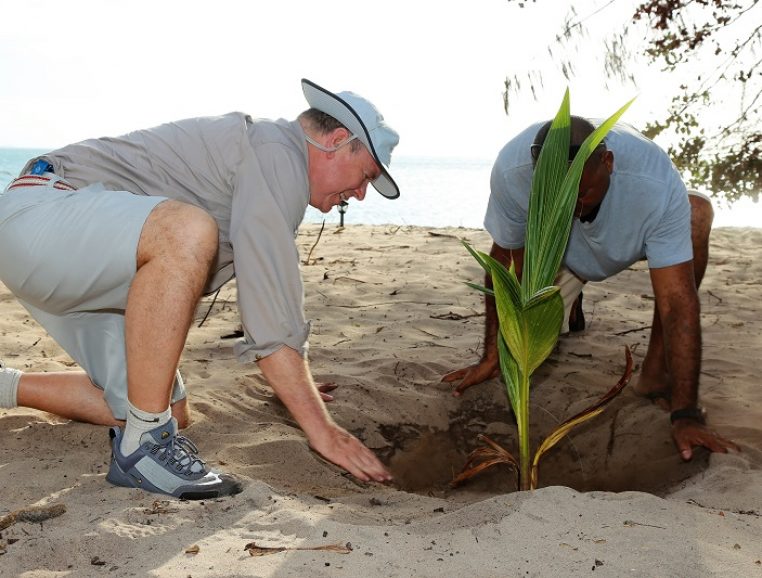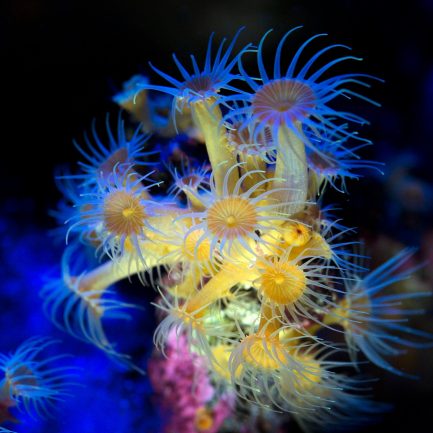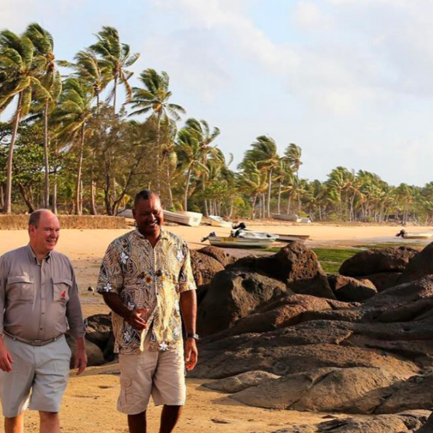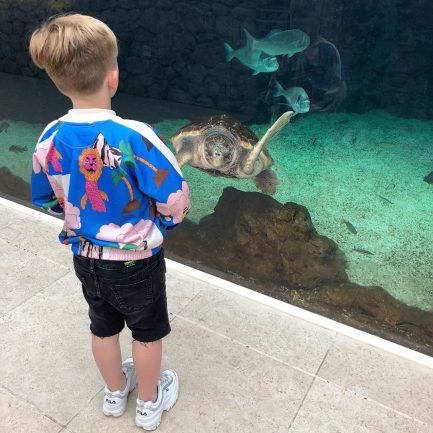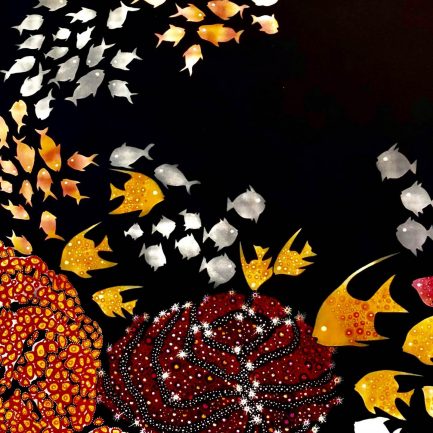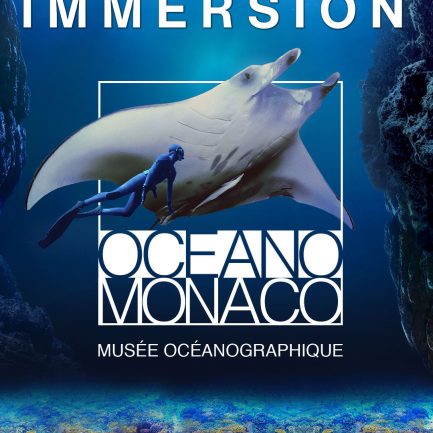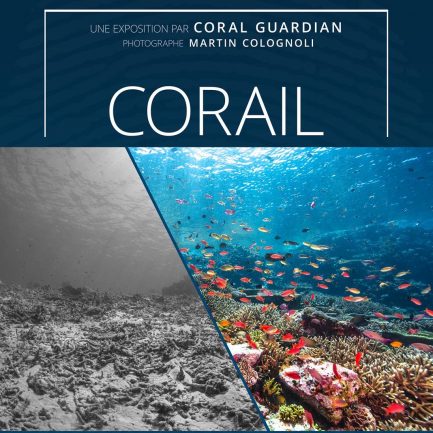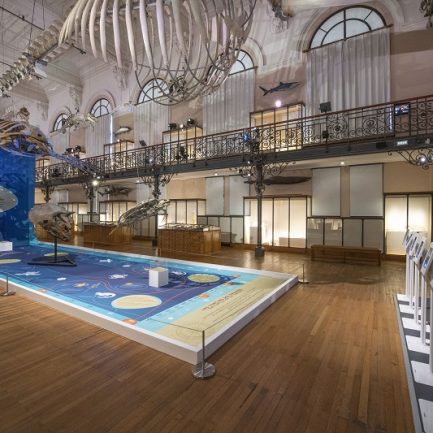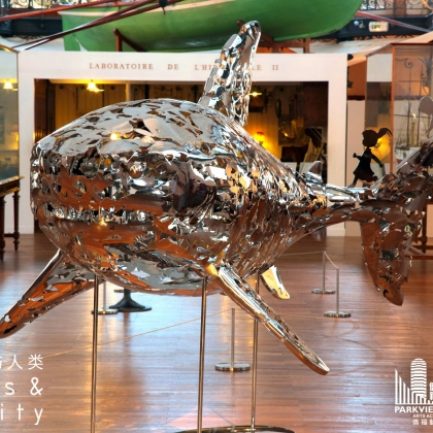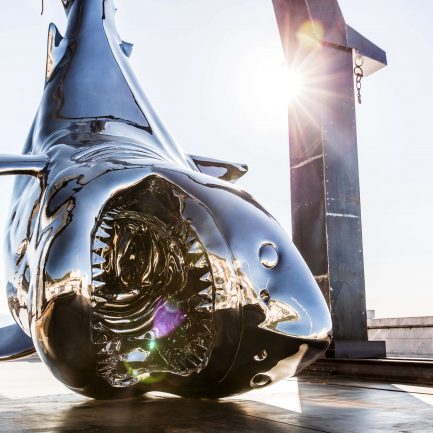THE BADU ISLAND EXHIBITION
An Explorations de Monaco mission
- Accueil
- Actualités
- Badu Island
The logbook of an expedition
In keeping with the spirit of the historical expeditions of his great-great-grandfather Prince Albert I, HRH Prince Albert II has relaunched Les Explorations de Monaco. One of these expeditions took him to Badu, one of the Torres Strait Islands, in the State of Queensland (northern Australia). When he arrived, HRH Prince Albert II immersed himself in the culture of the Islanders, who believe in having a balanced and respectful relationship with nature. Accompanied by Robert Calcagno, the managing director of the Institut océanographique, he drew great inspiration from the experience. The exhibition on display since 27 April 2019 at the Oceanographic Museum is a testament to this: it also evokes the memory of an initial encounter on Monaco territory.
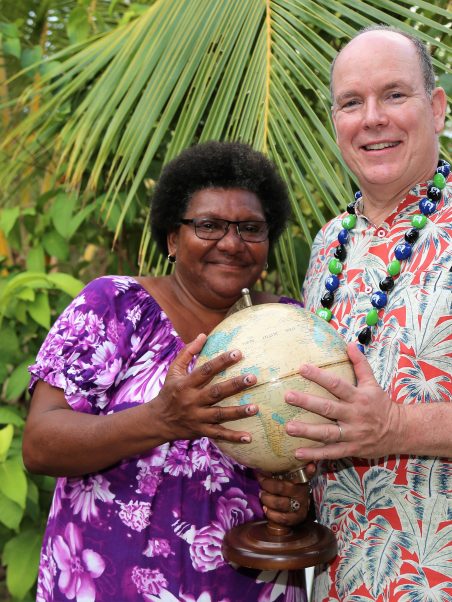
The memory of Taba Naba
In 2016, the Oceanographic Museum hosted Taba Naba, with the support of the Australian Government and the State of Queensland. Three major exhibitions were held at the same time and explored the unique relationship that binds the peoples of the sea to their environment.
The message combined ancestral tradition and modernity. Alick Tipoti created a magnificent ‘linocut’ measuring 17 x 40 metres on the Museum’s immense terrace. Alick Tipoti is one of the most famous artists from the Torres Strait Islands. He is actively involved in renewing the cultural heritage, traditions and language of these islands. Through his art, he explores traditional cosmology and recounts how oral culture, music, dance and visual arts intermingle to deliver the fundamental knowledge of the marine environment that is essential to the peoples’ survival. With no real hope of success, he invited HRH Prince Albert II to visit him on his island, to appreciate the richness of its culture and its environment, as well as its fragility…
Of what is this region symbolic?
The Torres Strait Islands, located between Australia and Papua New Guinea, are
at the crossroads between the Coral Sea and the Arafura Sea. The population, estimated at seven thousand inhabitants, is concentrated on only fourteen of the islands. The inhabitants of the strait, hardened since their most tender youth to the harsh conditions of their natural environment and swims with ‘salties’
(sea crocodiles) and sharks, have a quasi-inseparable relationship with their environment, which feeds them both physiologically and spiritually. Torres Strait Islanders remain attached to the concept of clans, particularly the family kwod with its totems (crocodile, turtle, dugong, ray, emu, etc.). The prerogative of the chief of the clan and the Council of Elders still prevails on numerous subjects, including with regard to ‘native title’, the
common law right to own land.
WHAT IS THREATENING THEM?
Today, there are at least time six times as many of the original population of the Torres Strait on the Australian continent than in their region of origin, which creates the risk that their traditions and ancestral culture will disappear. This territory is also particularly vulnerable to the effects of climate change: island coastline eaten away by erosion from the high tides, disappearing coral following repeated bleaching incidents… During an aquatic tour of the magnificent sea beds surround the island of Badu, HRH Prince Albert II was able to observe the effects of global warming on the coral reefs, which have suffered from severe bleaching over the past few years. Badu is also home to the dugong, seen as sacred and with which several clans identify. It is the only herbivorous marine mammal, and is currently endangered. There is a protected nature reserve devoted to dugongs west of the Torres Strait.
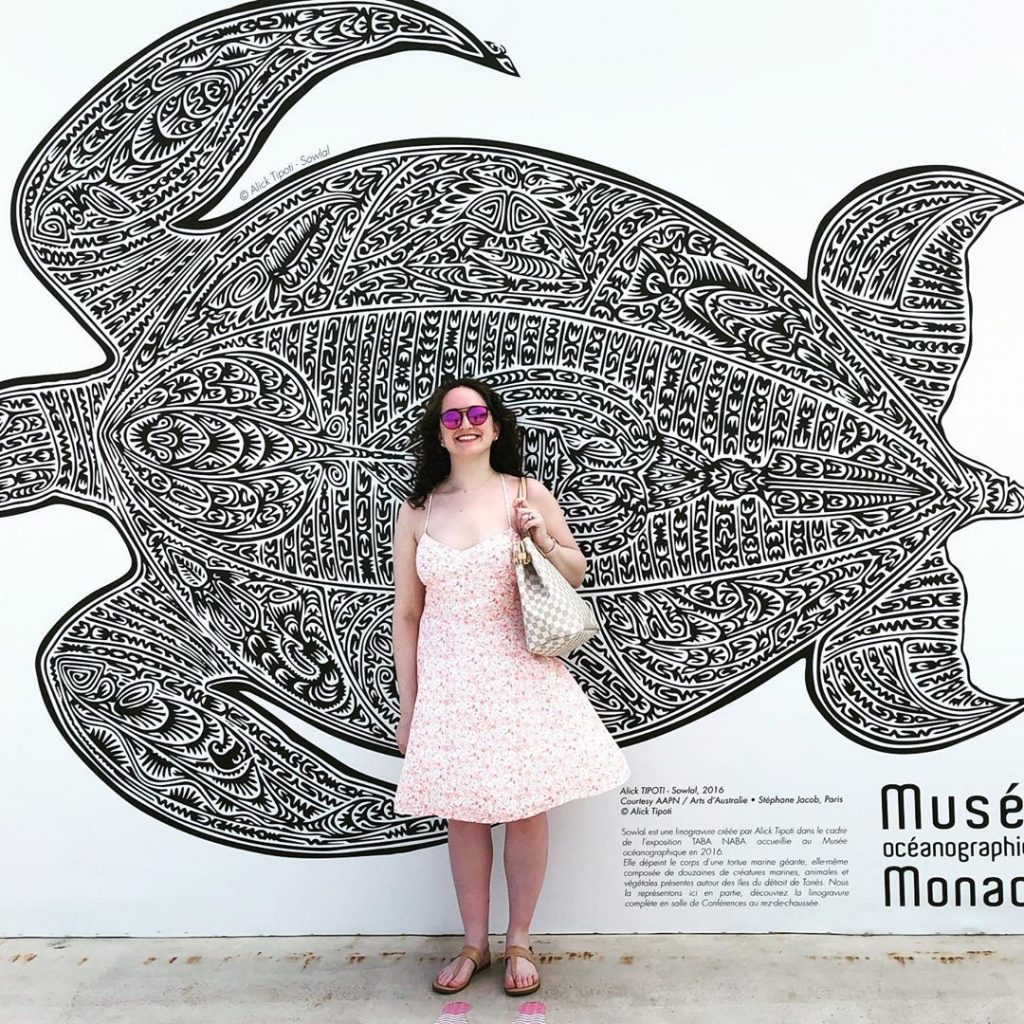
BADU ISLAND
An Explorations de Monaco mission
Following up from the Taba Naba event, HRH Prince Albert II wanted to lead an Explorations de Monaco mission to the island of Badu, to meet the people of Alick Tipoti. A photo exhibition showing the highlights of the trip is on display in the Museum’s Conference Room.
Les Explorations de Monaco is a platform devoted to the commitment of HSH Prince Albert II to the knowledge, sustainable management and protection of the Ocean. Founded on an initiative from the Government of the Principality of Monaco, Les Explorations de Monaco combines the Prince Albert II of Monaco Foundation, the Oceanographic Institute, the Centre Scientifique de Monaco and the Yacht Club de Monaco. It provides support for the work done by these institutions internationally, organising scientific research, mediation with the general public and governmental cooperation.
- Youtube
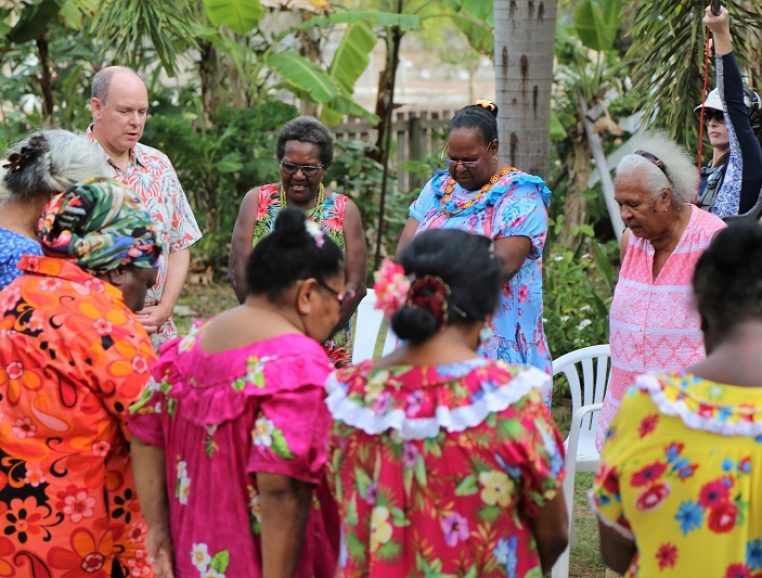
The Elders'
warning
Of the numerous discussions that took place at the location, the one that HRH Prince Albert II of Monaco held with the Elders of the Badu community remains one of the most striking. The Elders told him: ”We are in touch with nature and are thus in the perfect position to observe the disruption to the seasons and changes to the panoply of natural elements that surround us. We are the best witnesses. Climate disruption, for us, is above all synonymous with a loss of identity and the disappearance of our roots. We are afraid for our culture and our way of living. Unfortunately, few people listen to us. We have to get more people to witness what we are experiencing. What is affecting us. That is why your visit is so important to us. It opens a window on our communities and lets the world know that things are not OK ! »
What is a ''people of the sea''?
Bruno David and Ian J. McNiven, from Monash University, (Melbourne, Australia) are helping us gain a better definition of the identity of these indigenous peoples, defined as a ”people of the sea”: ”This means, first of all, that they spend most of their day interacting with the sea, crossing it and exploiting its potential, using traditional techniques like babagul, which involves using specific expertise and knowledge of magic used on board ships or when harpooning dugongs from naath platforms. It also means thinking about the elemental forces that govern everyday life: waves, sea winds, the clouds that come and go above distant oceans, the stars that guide us, the tides, the animals that are both familiar and dangerous : fish tortoises and sharks. To be a people of the sea, you need to have peculiar affinities with the sea; it is not enough merely to source your food from it. You have to think via the sea.“
